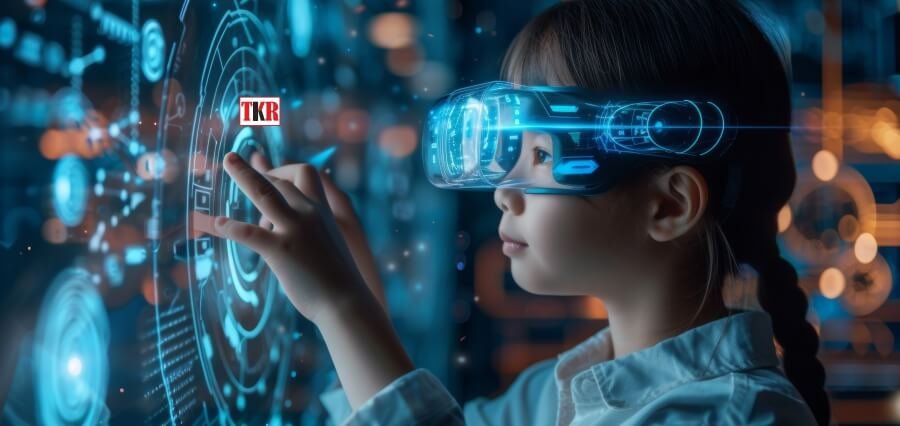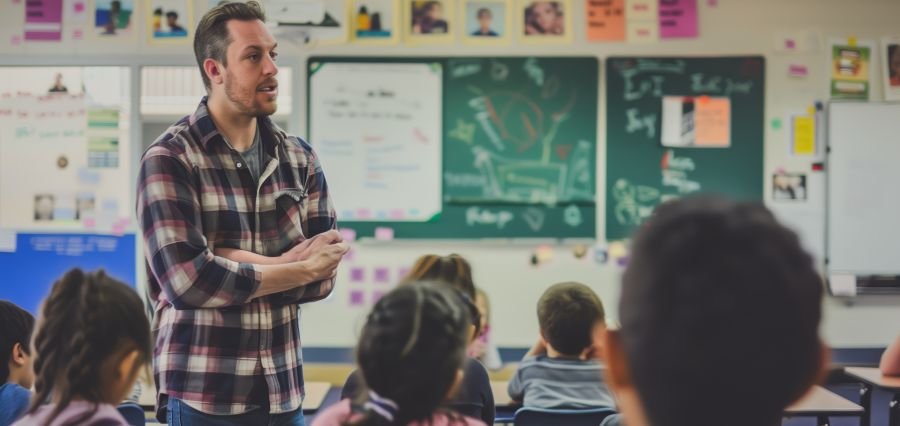Preparing future generations to thrive in a rapidly developing world requires educators and policymakers alike to stay updated with the latest trends in education. As technology continues to revolutionize how we learn, new pedagogical methods must be embraced to ensure that the education system is prepared to meet the demands of an advancing world. Here are a few trends in education that have the potential to transform classrooms around the world:
- Online learning
Online learning gained popularity as a result of social isolation measures taken during the Covid-19 pandemic. While most teachers just continued holding regular sessions using video conferencing tools like Zoom and Google Meet, self-paced e-learning platforms also experienced a rapid rise in users as more students adopted educational technologies and online coaching.
Despite the reopening of on-site educational institutions, distance learning is still a viable option for many students in the aftermath of the epidemic, and the online education market continues to expand significantly. Online learning can supplement or replace existing institutions to make higher education more accessible to adult learners and non-traditional students.
According to a recent estimate, almost 71% of jobs in the state of Nebraska require a four-year Bachelor’s degree, while only 58% of the state’s residents aged 25-35 have finished their Bachelor’s degree. This is mainly because traditional degrees are costlier and require students to commit a larger chunk of their time to their education. As a result, students who are also balancing work or family commitments alongside their education struggle to complete their degrees due to a lack of flexibility. By allowing self-paced learning, online colleges in Nebraska can make higher education more accessible to non-traditional students and those who must juggle a degree with other responsibilities like employment and family obligations.
- Blended learning
Operating on many of the same principles as online learning, blended learning combines digital teaching with in-person interactions. Institutions can avail the benefits provided by online learning models while maintaining face-to-face interactions between students and teachers. This model allows educators to make the best of both offerings. It lets students continue benefitting from the increased accessibility and flexibility offered by e-learning but ensures students can maintain regular contact with their teachers to receive individual support and establish a sense of trust and interpersonal connection.
- Personalized learning
Personalized learning is an approach that tries to accommodate each student’s needs, strengths, and weaknesses in their educational experience. Proponents of this model realize that a one-size-fits-all approach to learning does not necessarily lead to the best learning outcomes for all students as it does not account for the fact that students may learn specific skills at different paces and have diverse learning styles.
Through this model, each student receives an individualized learning program that incorporates short-term and long-term goals set by students. Personalized learning thus allows students to learn different skills at their own pace while staying on track with the learning outcomes expected at each point in their educational journey. It also uses artificial intelligence and data analytics to analyze student progress and highlight areas of improvement.
- STEAM education
STEAM education, which stands for Science, Technology, Engineering, the Arts, and Math, is an approach that introduces students to an interdisciplinary system of learning from an early age to develop skills such as critical thinking and problem-solving. Addressing real-world challenges often requires a multidisciplinary understanding of complex issues, and this approach inculcates such an understanding in students of all ages.
For example, while a traditional method of teaching computer science may instruct students in coding and data science disciplines, STEAM education also offers web design or public policy courses, enabling students to apply computer science concepts to address real-world needs.
- Social-emotional learning
Social-emotional learning is an increasingly important component of an inclusive educational environment. It encompasses skills such as self-confidence, empathy, emotional regulation, and more. It determines a child’s ability to develop positive relationships with other children and adults and respond to negative stimuli. The benefits provided by social and emotional development can also extend to adulthood and impact one’s success in life. In fact, a study found that children who displayed greater social skills at an early age were more likely to graduate high school and find a well-paying job. In contrast, less socially competent children were likelier to drop out of school and engage in substance abuse.
- Project-based learning
Project-based learning is designed to give students an opportunity to develop their skills and knowledge by engaging in projects based on real-world challenges that are personally meaningful. The projects are intended to be relevant to the real world and may be based on problems connected to students’ interests or communities. Project-based learning also develops collaborative skills in addition to reinforcing creativity and curiosity in the students. It integrates various areas of study and allows students to comprehend the connections between different disciplines.
- Gamification and game-based learning
Gamification is a strategy that incorporates features of games—like rules, levels, plots, and point systems—into the educational process to motivate and engage students. Humans naturally strive for success and reward, and this drive is fueled by a psychological process in which the brain links particular circumstances and behaviors to successful outcomes. Teachers can use this strategy by setting up a points system that rewards students for doing tasks associated with the course material and rewarding badges to students who put in extra effort. By presenting test questions as an interactive narrative rather than a list of seemingly unrelated questions, gamification can also be used to enhance student performance during testing.
Game-based learning differs from gamification by designing inherently game-like learning activities instead of incorporating game elements into normal activities. For example, an international relations course can integrate a game-based learning approach by allowing students to role-play as diplomats for specific countries and engage in mock negotiations. Similarly, a finance course can allow students to compete in a virtual stock trading competition. Teachers can utilize this approach to make learning more fun and interactive for students, ultimately improving student outcomes.
As seen above, developing technologies have completely transformed the education sector and are benefiting an ever-increasing number of students by making education more accessible to people from diverse backgrounds. It has become increasingly important to move away from traditional notions regarding what a classroom should look like and embrace new trends to keep up in a rapidly changing world. Online and personalized learning formats can accommodate students with busy schedules or different learning styles. Moreover, techniques such as gamification and project-based learning ensure that the learning process remains interactive for all. Finally, educators must also embrace STEAM education and social-emotional learning to prepare today’s students better to succeed later in life.









